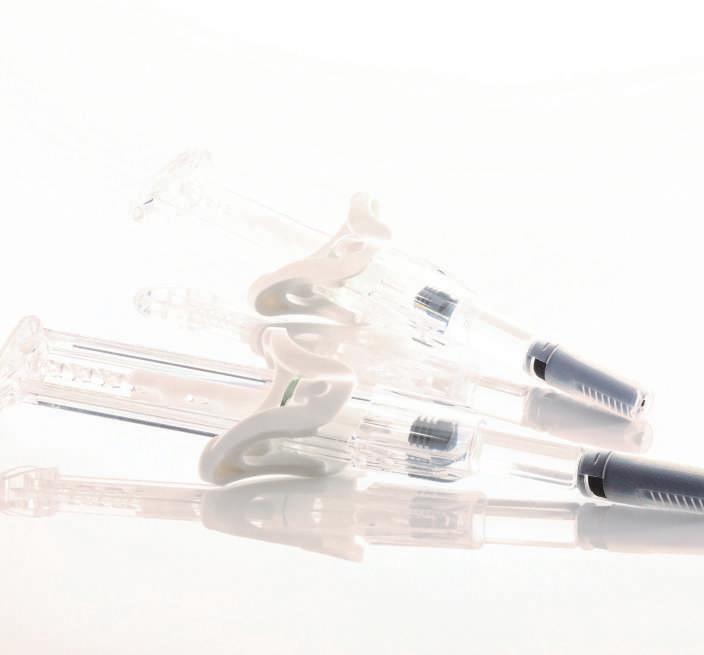Logistics & Supply Chain Management
Q&A with Brussels Airport, Changi Airport & Pharma. Aero 1. Brussels Airport, Miami International Airport and Changi Airport launched ‘Pharma.Aero’. Can you tell IPI more about how this collaboration came about? Way back prior to 2016, Brussels Airport, Miami International Airport and Singapore Changi Airport came together with the joint ambition to foster greater collaboration amongst IATA CEIV Pharma airport communities, as well as between the communities and pharma manufacturers to enhance the reliability of pharma air transportation. To the above end, the founding members concluded the need to create a neutral platform for the air pharma supply chain. This approach proved to be successful as since Pharma.Aero’s formation, many pharma shippers and operators have joined the alliance and work closely together in different projects. 2. It is clear to see that Pharma.Aero have taken the initiative to improve pharma handling and quality in the air cargo industry worldwide. What is Pharma.Aero’s next plan of action? Pharma.Aero aims to establish thought leadership within the organisation and become a global reference for creating transparency and reliability in the air pharma supply chain. This is achieved by bringing together pharmaceutical shippers and supply chain players to collaborate through projects, as well as the publication of technical/white papers. 3. With the increasing demand for reliable end-to-end air transport for pharmaceutical cargo, what steps will you take to focus on pharmaceutical shippers and all industry stakeholders who embrace the IATA CEIV programme? Without any doubt, IATA CEIV Pharma is the backbone of our organisation. Pharma.Aero enhances collaboration between all stakeholders in the market. Close collaboration amongst members and with other international industry platforms such as IATA and TIACA will further emphasise the needs for and promote high and harmonised standards when it comes to airfreighting pharma. 86 INTERNATIONAL PHARMACEUTICAL INDUSTRY
4. Pharma.Aero have recently signed global animal health giant Zoetis as a new Strategic Pharma Shipper Member. Can you tell IPI how collaborating with Zoetis can strengthen your pre-existing partnerships with airlines and airports like Brussels Airport? It is undoubtedly the case that a pharma shipper with global leadership such as Zoetis within the life science industry (in this case animal health) is of high value to Pharma.Aero. Zoetis’ membership underlines the importance of collaboration with global pharmaceutical shippers. It is only strong collaboration with pharma shippers that helps improve pharma air supply chain standards. “Zoetis are delighted to join Pharma. Aero. The integrity of our physical supply chain plays an important role in how we transport our products,” says Rita O’Sullivan, Zoetis’ Head of Global Transportation. “Of specific interest to Zoetis is how we can partner with airlines, GSAs and freight forwarders to continually enhance and improve the cold chain service offerings, which are critical to the animal health sector.” Nathan De Valck, chairman of Pharma. Aero adds: “The pharmaceutical shippers are at the core of Pharma.Aero’s cross-industry collaboration initiative. Therefore, we are very happy to welcome Zoetis into Pharma. Aero and look forward to their active participation in our project groups. We will continue to listen to the expectations of our four pharmaceutical shipper members. We aim to further intensify collaboration with our pharma shippers members in Pharma. Aero.” 5. A growing number of US airports are investing in improving facilities and processes, as well as exploring cargo community systems and expedited custom clearance schemes, to facilitate cargo flows and stimulate new traffic. With Pharma.Aero partnering with pharma gateways like Brussels and Changi Airport, will Europe and Asia follow in the US’s footsteps? The pharma industry is not only demanding faster and more reliable transportation, but also higher supply
chain visibility. In addressing these, supply chain players are turning towards data-sharing, real-time visibility and collaboration. In September 2017, Pharma.Aero kicked off the Digi 1.0: Certification of Pharmaceuticals Air Trade Lanes through Digitisation to examine whether data from different stakeholders could be ingested and displayed on a single platform to achieve greater visibility and insights throughout the supply chain. Subsequent to Digi 1.0, Pharma.Aero transcended from a proof of concept to a prototype, with Digi 2.0: The Global Pharma Tracker Prototype, where real data from live pharma shipments were integrated into the platform and allowing the users to visualise the door-to-door performance of the entire pharma supply chain and, at the same time, control visibility of data based on the agreed data sharing and governance framework. Both projects were co-championed by Brussels Airport and Changi Airport. The prototype lane is Brussels-SingaporeSydney with Singapore Airlines as the carrier. A white paper summarising the key findings of the project will be published in the coming months. As a next step, Pharma.Aero and Nallian will be launching an early adopter programme for operational use. At present, Brussels and Singapore are connected through freighter services offered by Singapore Airlines. Come October 2020, Singapore Airlines will introduce non-stop passenger services between our two cities, strengthening our certified trade lane positioning, enabling safe, reliable and speedy transportation of pharma shipments In 2019, Pharma.Aero kicked off a second project, aimed at increasing the transparency of pharma handling. Where the GPT focused on performance of the pharma handling, the pharma corridor mapping project focusses on the capabilities of all the operators involved in pharma handling on a specific airportto-airport lane. Both performance and capabilities are in fact two sides of the same coin. Pharma.Aero performed a first pilot project for the Brussels – Hong Kong Spring 2020 Volume 12 Issue 1
























